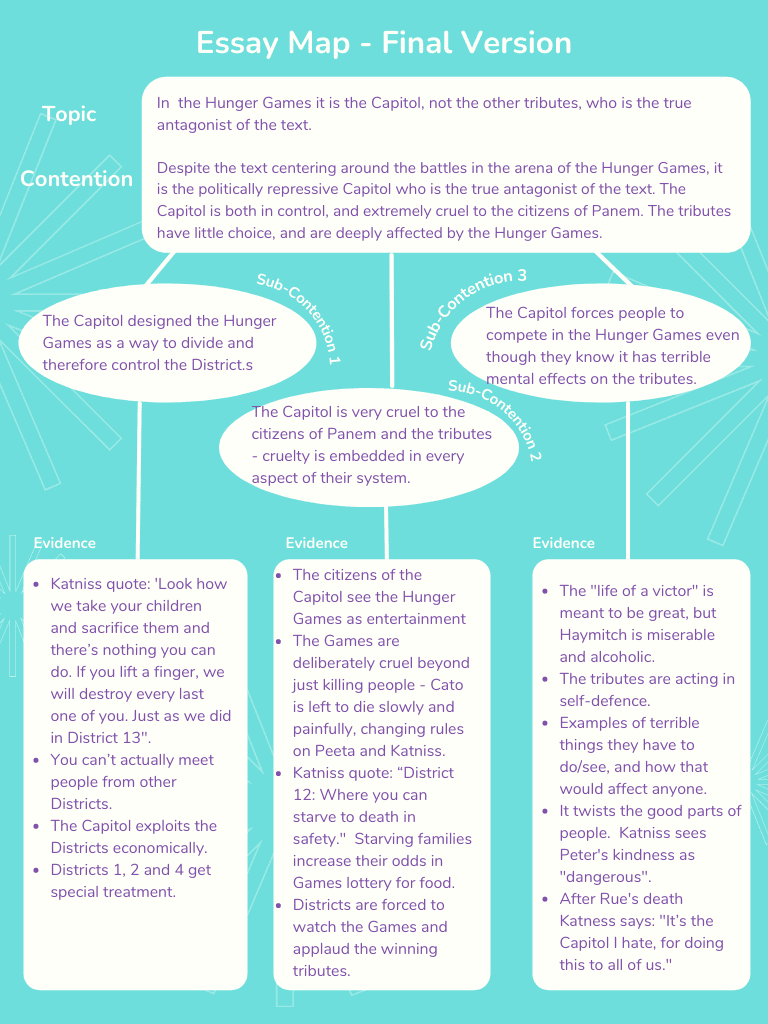In our previous posts we have brainstormed, worked out our contention and our sub-contentions, and found evidence to support one of the sub-contentions. In the last post we looked ahead at how to turn that evidence into a body paragraph. But before we get stuck into writing the essay properly, let’s pull everything we’ve done together and make our essay map.

You can see that the language here is pretty rough – not really ready to hand in! That can be helpful at this stage, as it’s a bit easier to work with while you’re thinking things through.
To make sure that the essay map works you need to look at it and ask yourself some questions:
1) Does the evidence fully support each sub-contention? Are your arguments convincing?
2) Do you have the right amount of evidence for a paragraph, or is there not enough or too much? You should feel calm looking at the evidence, it should be reasonably easy to see how it will turn into a paragraph.
If you answered NO to either of those questions, you need to change something. This may mean that a sub-contention will change, in which case you may also have to change your overall contention.
3) Do your sub-contentions fully support your overall contention? Is your argument convincing?
4) Does your overall contention directly address the essay topic?
If you answered NO to either of those questions, you need to change something. This may mean that you need to change a sub-contention and find new evidence.
Keep going until you can answer YES to all the questions, and then it’s time to polish up your contentions and sub-contentions into essay-speak. It’s important to take your time with contentions and sub-contentions and make sure they say exactly what you want them to – any mistakes there can make your essay seem less logical and your arguments less compelling.

And there you have it – a finished essay map! In future posts we’ll go over exactly how to go from an essay map to a well-written essay, but even without that this should really help you get started.
One final tip – you’re allowed to change your essay map! As you write you may have new ideas, and its fine to add them in or even change the plan entirely. Just remember, if you do that go back over the four questions above and make sure new plan is sound.
Want your own essay map template? Download it here!





